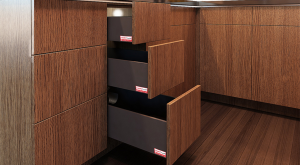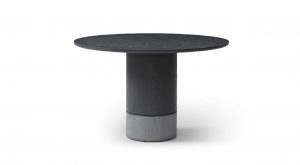Featured Post
Essential Tips for Maintaining Wooden Furniture
Wooden furniture adds warmth and elegance to any home, but it requires proper care to maintain its beauty. This guide provides essential tips for cleaning, protecting, and preserving your wooden pieces.
Have you ever admired a beautifully maintained wooden table and wondered how it stays so pristine? The secret lies in regular care and attention. In this furniture maintenance and care guide, we'll share essential tips for maintaining wooden furniture that will help you keep your pieces looking new for years to come.
I remember when I first bought my oak dining table. It was love at first sight, but I quickly learned that maintaining its beauty required more than just occasional dusting. Through trial and error, and a bit of research, I discovered the best practices for caring for wooden furniture. Now, I'm excited to share these insights with you.
Regular Cleaning and Dusting
Regular cleaning is crucial to prevent dirt and grime from damaging the wood. Dust might seem harmless, but it can act like sandpaper when it accumulates on wooden furniture, scratching the surface. Use a soft, lint-free cloth, such as a microfiber cloth, to gently wipe away dust. Avoid using feather dusters, as they can sometimes scratch the wood.
To clean spills, do it immediately to avoid permanent stains. For sticky spots, a mixture of mild soap and water on a soft cloth will do the trick. Regularly dust your wooden furniture, ideally once a week, to keep it looking its best.
Image
{"prompt": "A middle-aged woman with brown hair tied in a ponytail, wearing casual clothes, gently dusting a dark walnut dining table with a soft, white microfiber cloth. The table has intricate carvings on the legs, and there's a vase with fresh flowers on it. Natural light is coming through a nearby window, casting soft shadows.", "alt_text": "Person dusting a wooden table with a cloth."}
Polishing and Waxing
Polishing and waxing are essential in maintaining the luster of wooden furniture. Polishing enhances shine and can offer some protection, while waxing adds a protective layer that can fill in minor scratches. Choose a product that is appropriate for your furniture type; some people prefer natural options, like beeswax, while others opt for commercial polishes.
To apply polish or wax, ensure your furniture is clean and dry. Use a small amount on a soft cloth and rub it into the wood in circular motions. Buff with another clean cloth to achieve a shine.
Image
{"prompt": "A close-up shot of a person's hand applying a thin layer of beeswax to a wooden chair seat using a soft cloth. The chair is made of cherry wood with a rich, reddish hue. In the background, there's a workbench with various woodworking tools.", "alt_text": "Applying wax to a wooden chair."}
Protecting from Environmental Damage
Sunlight, humidity, and temperature can significantly affect your wooden furniture's appearance and longevity. Position your furniture away from direct sunlight to minimize fading. If possible, rotate pieces to ensure even exposure.
Using curtains or blinds can also protect against harsh sunlight. Additionally, consider using a humidifier or dehumidifier to control indoor humidity levels, as wood expands and contracts with changes in moisture.
Image
{"prompt": "Wooden furniture in a sunlit room with curtains partially drawn. The light highlights the grains of the wood, and a soft throw blanket is draped over the arm of a chair. The ambiance is warm and inviting.", "alt_text": "Wooden furniture in a sunlit room."}
Preventing and Repairing Minor Damage
To prevent scratches and dents, use coasters and placemats. For minor repairs, a touch-up pen can effectively conceal small scratches on finishes. Always be cautious and apply it on a test area to ensure color matching is perfect.
If you notice deep scratches, consider sanding the area carefully, followed by refinishing. In cases where the damage is extensive, seeking professional help is advisable.
Image
{"prompt": "A person using a touch-up pen on a scratched table surface. The table is a dark mahogany, and the person appears focused on blending the color in. Tools for woodworking are visible in the background.", "alt_text": "Using a touch-up pen on a scratched table."}
Dealing with Pests
Woodworm and other pests can cause significant damage if left unchecked. Look for signs, such as tiny holes or sawdust near the furniture. Regularly check wooden pieces, especially older ones, for any signs of pests.
To prevent infestations, ensure that your furniture is stored in a dry area. If you suspect an infestation, consider consulting pest control services for treatment.
Image
{"prompt": "Close-up of woodworm holes in furniture. The wood shows signs of damage with small, round holes, and fine sawdust is collected at the base. The texture of the wood reveals its age and wear.", "alt_text": "Close-up of woodworm holes in furniture."}
Seasonal Care Tips
Adjust your care based on the seasons. In winter, wooden furniture can dry out due to low indoor humidity, so consider running a humidifier in the room. In summer, watch for increased sun exposure and adjust furnishings accordingly.
Image
{"prompt": "Wooden furniture covered with a protective cloth during storage in a garage. The scene is tidy, with labeled boxes and tools in the background, showing an organized space for furniture storage.", "alt_text": "Wooden furniture covered during storage."}
Conclusion
By following these essential tips for maintaining wooden furniture, you can ensure your tables, chairs, and other wooden pieces remain beautiful and functional for years to come. Remember, regular care is the key to preserving the natural beauty of wood.
Read More
- Understanding Different Wood Finishes
- How to Restore Antique Wooden Furniture
- Choosing the Best Wood for Your Home Decor
- Eco-Friendly Ways to Clean and Maintain Furniture









